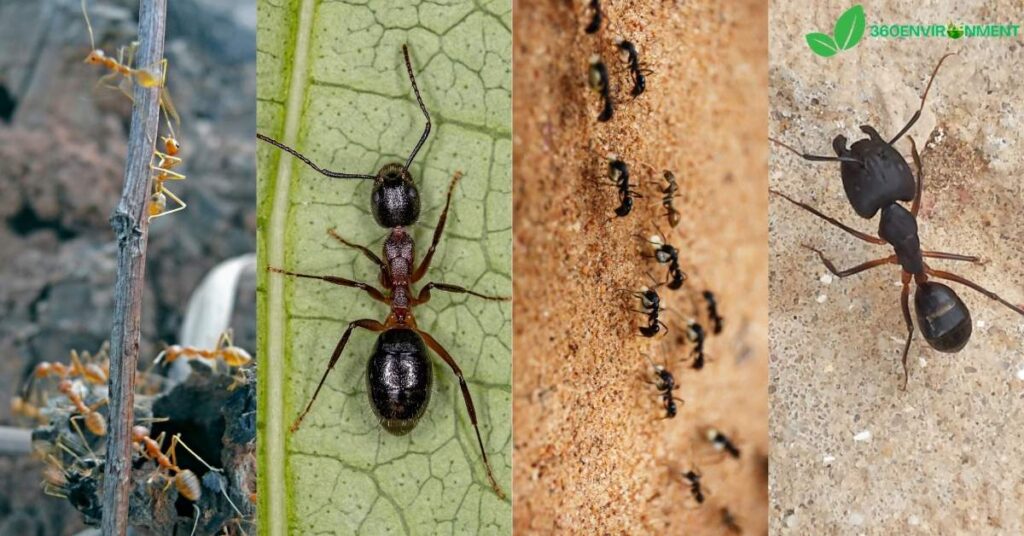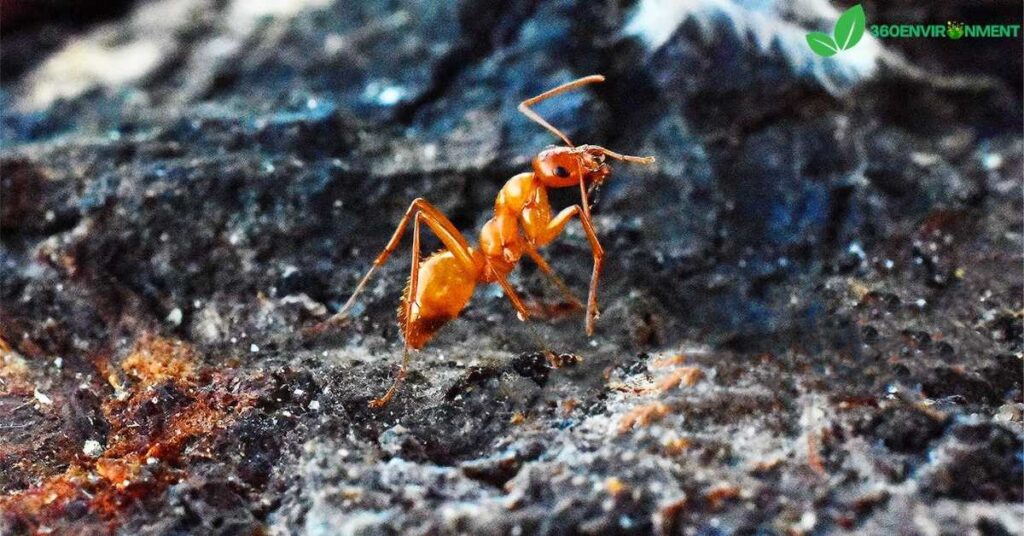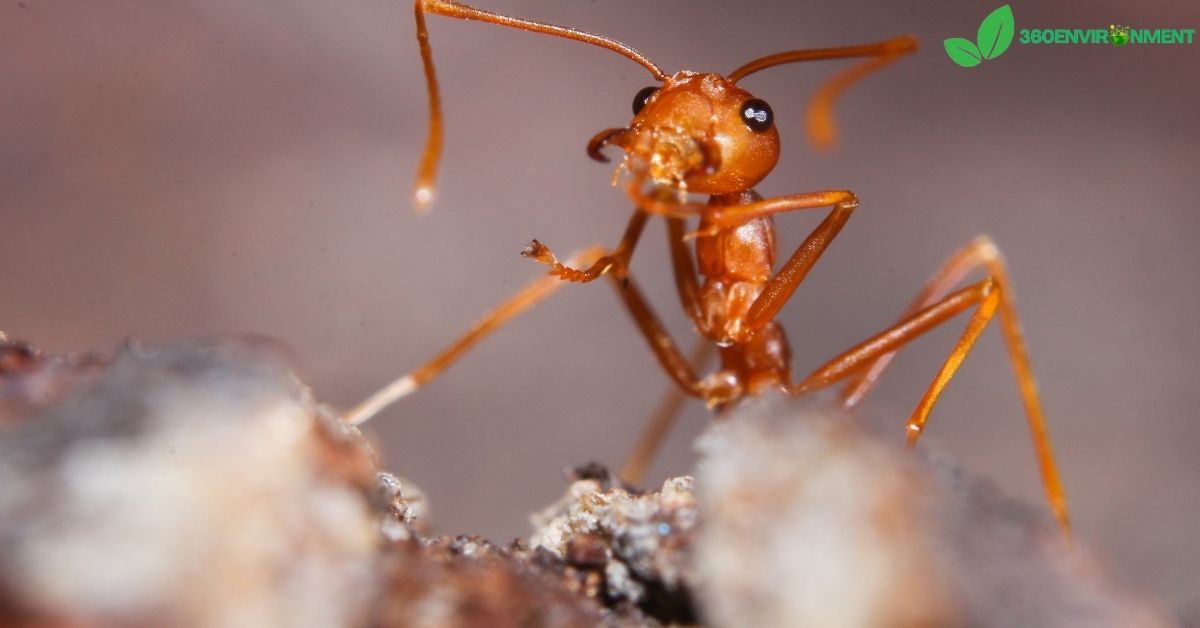Ants are one of the most widespread and diverse groups of insects, found in almost every environment around the globe. In Arkansas, a state with a rich variety of ecosystems, ants are an essential part of the natural landscape. These tiny creatures play significant roles in soil aeration, seed dispersion, and decomposition, making them crucial to the state’s environmental health. However, certain species of ants are also considered pests, particularly when they invade homes and gardens.
In this article, we will explore the most common ants in Arkansas, examining their characteristics, behaviors, and ecological roles. By understanding more about the ants that inhabit Arkansas, you can better appreciate their importance to the environment while also learning how to manage their presence when they become problematic.
1. Introduction to Ants: Why Are They Important?
Ants are social insects that belong to the family Formicidae and are closely related to bees and wasps. With over 12,000 known species worldwide, ants are a vital part of many ecosystems, contributing to processes such as decomposition, soil enrichment, and food chain dynamics. Ants communicate through chemical signals called pheromones, and they live in colonies that can range from a few dozen individuals to millions.

In Arkansas, ants can be found in forests, grasslands, wetlands, and urban areas. Some ant species are beneficial to the environment, while others can be considered pests due to their tendency to invade homes, destroy crops, or bite humans. Let’s take a look at some of the most common ants in Arkansas and how they impact both natural ecosystems and human environments.
2. The Most Common Ants in Arkansas
Arkansas is home to a wide variety of ant species, each with its unique behaviors and habitats. The following are the most common ants in Arkansas, ranging from native species to invasive ants that have established themselves in the region.

2.1. Carpenter Ants (Camponotus spp.)
Carpenter ants are among the largest and most well-known ants in Arkansas. These ants can grow up to 1/2 inch in length and are usually black or a combination of red and black. Carpenter ants are named for their habit of excavating wood to create nests, though they do not eat the wood as termites do.
Characteristics:
- Size: 1/4 to 1/2 inch long
- Color: Black or reddish-black
- Habitat: Forested areas, decaying wood, homes with moisture problems
- Diet: Sugars and proteins, such as honeydew, insects, and household food scraps
Carpenter ants play an important role in decomposing dead trees in natural ecosystems, helping to break down decaying wood. However, when they nest inside homes or other structures, they can cause significant damage by hollowing out wood to create galleries for their colonies. Moist, decaying wood is particularly attractive to carpenter ants, making homes with water damage or leaks vulnerable to infestations.
2.2. Odorous House Ants (Tapinoma Sessile)
Odorous house ants are small, dark brown ants that are commonly found in homes throughout Arkansas. They get their name from the strong, rotten coconut-like smell they emit when crushed. These ants are known for their ability to invade homes in large numbers, especially when searching for food.
Characteristics:
- Size: 1/16 to 1/8 inch long
- Color: Dark brown to black
- Habitat: Urban and suburban areas, inside homes, near water sources
- Diet: Sugars, including honeydew, fruits, and sweets
Odorous house ants prefer sugary foods and are often attracted to kitchens, pantries, and areas where food is stored. They nest both indoors and outdoors, making them persistent pests in homes and businesses. While they do not pose a structural threat like carpenter ants, their presence can be a nuisance, particularly when they invade in large numbers.
2.3. Argentine Ants (Linepithema Humile)
The Argentine ant is another invasive species that has established itself in Arkansas. These ants are small and light to dark brown in color. Argentine ants are highly adaptable and form massive colonies that can displace native ant species and other insects. They are often found in urban areas, particularly around homes and businesses.
Characteristics:
- Size: 1/8 inch long
- Color: Light to dark brown
- Habitat: Urban environments, around homes, in moist areas, and near food sources
- Diet: Sugars, proteins, and fats, including honeydew from aphids and household food
Argentine ants are known for their ability to form large, interconnected colonies that can stretch across vast areas. These ants often invade homes in search of food, particularly during periods of rain or drought when their outdoor food sources are scarce. While not as aggressive as fire ants, Argentine ants can be difficult to control due to the sheer size of their colonies.
2.4. Fire Ants (Solenopsis invicta)
Fire ants are notorious for their aggressive behavior and painful stings. Originally from South America, Solenopsis invicta, also known as red imported fire ants, are an invasive species that has spread across the southern United States, including Arkansas. These ants are highly territorial and will defend their nests aggressively, often swarming and stinging when disturbed.

Characteristics:
- Size: 1/8 to 1/4 inch long
- Color: Reddish-brown
- Habitat: Open areas, fields, lawns, and gardens
- Diet: Sugars and proteins, including insects, small animals, and human food
Fire ants build large mounds in open areas and can cause problems for both people and animals. Their painful stings can lead to allergic reactions in some individuals, making fire ants a significant pest in Arkansas. They are also known to disrupt local ecosystems by preying on native insects and small animals, reducing biodiversity in the areas they invade.
2.5. Pavement Ants (Tetramorium Immigrans)
Pavement ants are small, dark brown to black ants that are commonly found nesting in cracks in sidewalks, driveways, and other paved areas. These ants are native to Europe but have spread throughout the United States, including Arkansas, where they are frequently encountered in urban environments.
Characteristics:
- Size: 1/8 inch long
- Color: Dark brown to black
- Habitat: Paved areas, sidewalks, foundations, and buildings
- Diet: Sugars, proteins, and fats, including food crumbs and insects
Pavement ants are primarily outdoor ants, but they can enter homes in search of food. They build nests under sidewalks, driveways, and patios, and are often seen foraging in large numbers. While they are generally not aggressive, pavement ants can be persistent pests when they invade indoor spaces.
2.6. Little Black Ants (Monomorium minimum)
Little black ants are among the smallest ants found in this region, but they are also some of the most common ants in Arkansas. These tiny ants are often seen foraging for food in homes, gardens, and other areas. Their nests are typically found in the soil or under rocks, but they can also nest inside walls or other voids in buildings.
Characteristics:
- Size: 1/16 inch long
- Color: Black
- Habitat: Soil, under rocks, indoors, and near food sources
- Diet: Sugars, proteins, and fats, including honeydew, insects, and household food
Little black ants are often seen in kitchens and pantries, where they forage for food. They are not aggressive and do not pose a structural threat, but their presence can be bothersome when they form large colonies inside homes. These ants are particularly attracted to sweets, making them common invaders of kitchens and dining areas.
3. The Ecological Roles of most common Ants in Arkansas
While some ant species can be pests, ants play important roles in maintaining the health of Arkansas’s ecosystems. Ants contribute to several key ecological processes that benefit both the environment and human agriculture.

3.1. Soil Aeration and Improvement
The most common Ants in Arkansas are natural soil aerators. As they dig tunnels and create underground nests, ants help to break up compacted soil, allowing air and water to reach plant roots. This improves soil quality and promotes healthier plant growth, making ants beneficial for agriculture and gardening.
Carpenter ants, for example, are known to nest in decaying wood, which helps break down dead trees and recycle nutrients back into the soil. Other ants, like pavement ants and odorous house ants, also contribute to soil improvement through their tunneling activities.
3.2. Seed Dispersal
Some ant species play a role in seed dispersal, a process known as myrmecochory. In Arkansas, certain ants collect seeds and carry them back to their nests, where they consume the seed’s outer coating but leave the seed itself intact. This helps plants spread their seeds over a wider area, promoting plant diversity and regeneration.
Ant species such as little black ants and pavement ants are known to contribute to seed dispersal in both natural and urban environments. This activity is particularly important for native plants that rely on ants to distribute their seeds to new locations.
3.3. Pest Control
Ants are natural predators of many pests, including insects, larvae, and small arthropods. In agricultural settings, ants can help control pest populations, reducing the need for chemical pesticides. Fire ants, for example, are known to prey on certain agricultural pests, though their aggressive behavior often makes them unwelcome in residential areas.
In natural ecosystems, ants help maintain a balance between predator and prey species, ensuring that no single pest species becomes too dominant. This contributes to the overall health and stability of the ecosystem.
4. Managing The Most Common Ants in Arkansas: Prevention and Control
While ants play important ecological roles, they can become pests when they invade homes, businesses, and gardens. Managing ants in Arkansas requires a combination of prevention and control measures to minimize their impact without harming the environment.

4.1. Preventing Ant Infestations
The best way to manage ants is to prevent infestations before they occur. Here are some tips for keeping ants out of your home and garden:
- Seal entry points: Ants can enter through tiny cracks and gaps in doors, windows, and foundations. Seal these entry points with caulk or weatherstripping to prevent ants from getting inside.
- Keep food sealed: Store food in airtight containers and clean up spills immediately. Ants are attracted to food sources, particularly sweets, so keeping your kitchen clean is essential.
- Eliminate moisture: Ants are attracted to moisture, so fix leaks and remove standing water in and around your home. This is especially important for carpenter ants, which prefer moist, decaying wood.
- Remove debris: Clear away leaf litter, wood piles, and other debris that could serve as nesting sites for ants.
4.2. Natural Ant Control Methods
For those looking for environmentally friendly ways to control ants, there are several natural methods to consider:
- Diatomaceous Earth: This natural powder can be sprinkled around entry points and ant trails. It works by dehydrating ants, effectively killing them without the use of chemicals.
- Essential Oils: Certain essential oils, such as peppermint, tea tree, and eucalyptus, can repel ants. You can create a spray by mixing a few drops of essential oil with water and applying it to areas where ants are entering.
- Bait Traps: Ant bait traps can be used to target specific species. These traps contain a slow-acting poison that ants carry back to their colony, eventually eliminating the entire nest.
4.3. Professional Pest Control
In cases of severe infestations, professional pest control may be necessary. Pest control companies can assess the situation and provide targeted treatments to eliminate ant colonies. However, it’s important to choose environmentally friendly pest control options that minimize the use of harmful chemicals.
5. Conclusion: Most Common Ants in Arkansas – A Balance Between Beneficial and Pest
Ants are an integral part of Arkansas’s ecosystems, contributing to processes such as soil aeration, seed dispersal, and pest control. The most common ants in Arkansas, including carpenter ants, fire ants, Argentine ants, odorous house ants, pavement ants, and little black ants, each play unique roles in both natural and human environments.
While some ant species can become pests, particularly when they invade homes or cause damage to structures, it’s important to recognize the ecological value of ants in maintaining healthy ecosystems. By understanding the behavior and habitat preferences of ants, you can take steps to prevent infestations and manage their presence in environmentally friendly ways.
Whether you’re dealing with ants in your home or simply observing them in your garden, it’s clear that ants are a fascinating and essential part of Arkansas’s natural world.
FAQs
- What is the most common ants in Arkansas homes?
Odorous house ants and Argentine ants are among the most common ants found in Arkansas homes, attracted to food and moisture. - Are fire ants dangerous in Arkansas?
Fire ants are aggressive and can deliver painful stings. While not typically life-threatening, their stings can cause allergic reactions in some individuals. - How do I prevent ants from entering my home?
To prevent ants, seal entry points, keep food stored in airtight containers, eliminate moisture, and remove debris from around your home. - What are the benefits of ants in Arkansas’s ecosystems?
Ants contribute to soil aeration, seed dispersal, and natural pest control, making them important for maintaining healthy ecosystems in Arkansas. - What natural methods can I use to control ants in my home?
You can use diatomaceous earth, essential oil sprays, and bait traps to control ants in an environmentally friendly way. - Do carpenter ants cause structural damage in Arkansas?
Yes, carpenter ants can cause damage by hollowing out wood to create nests, particularly in homes with moisture problems.

